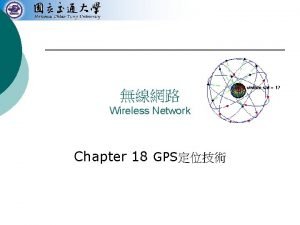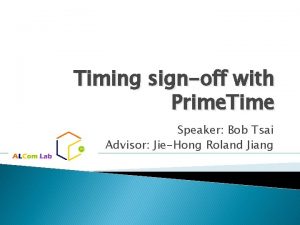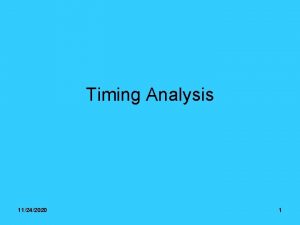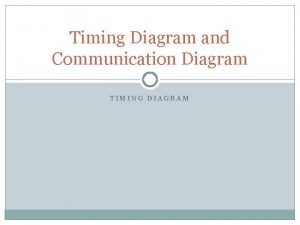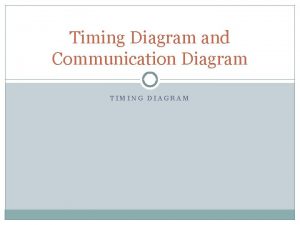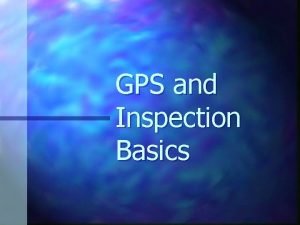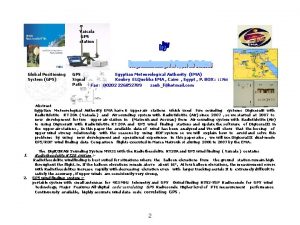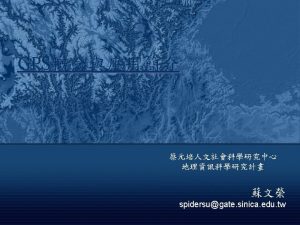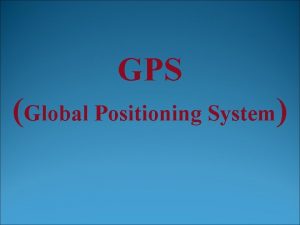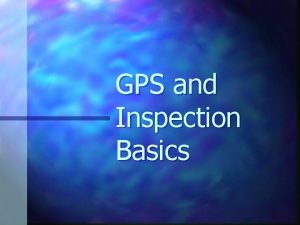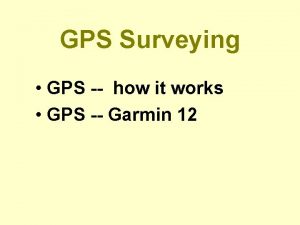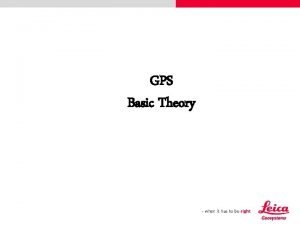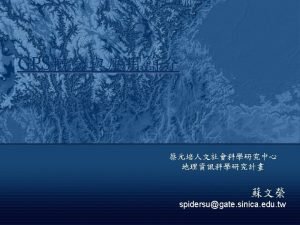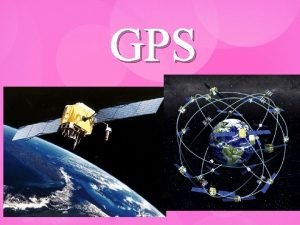Timing applications of GPS Time for GPS Vivekanandanmurugan














- Slides: 14

Timing applications of GPS Time for GPS Vivekanandanmurugan Sivaraman Gaurav Sharma John Hannah

Relationship between USNO and GPS ØUSNO-United States Naval Observatory The standard time in the u. s is maintained by the USNO using the Master clock. This is the timing standard for GPS ØGPS uses the time generated by USNO

Difference between Atomic and Standard Clock. • The oscillation in the atomic clock is between the nucleus of the atom and the surrounding electrons. • The oscillation in the standard clock is exactly parallel to the balance wheel and hairspring of the watch

How Atomic Time is Measured? • Cesium’s atomic natural frequency was formally recognized as the international unit of time • A second is defined as 9, 192, 631, 770 periods of radiation corresponding to the transition between the two hyperfine levels of the ground state of an undisturbed cesium atom at sea level. • Atomic clocks accuracy is about 1 million times from astronomical techniques.

Types of Atomic Clocks • Cesium Atomic Clocks • Hydrogen Atomic Clocks • Rubidium Atomic Clocks ØThe most accurate atomic clocks available today use the cesium atom.

Radio navigation and GPS • Timing is used to triangulate radio signals received from synchronous transmitters with known positions. • To triangulate a position, a receiver clock must be synchronized with GPS. • With four satellites and no errors , a user can exactly derive time plus the three positions.

Satellite Clocks • Each block II/IIA two Cesium and two Rubidium atomic time clocks. • Each of IIR blocks contains three Rubidium atomic clocks

The photo shows a GOES-synchronized clock, which uses a time signal broadcast by NOAA's GOES satellite.

Composite Clocks • GPS time is given by its composite clock Ø Consists of all operational monitor station and satellite frequency standards. • The GPS epoch is 0000 UTC (midnight) on January 6, 1980 • GPS time is not adjusted it is offset from the UTC by an integer number of seconds, due to the insertion of leap seconds • What is a Leap Second? Ø An occasional adjustment of one second, added to, or subtracted from, Coordinated Universal Time (UTC) to bring it into approximate synchronism with UT-1, which is the time scale based on the rotation of the earth.

Cont’d • This offset is given in the navigation message and the receiver should apply the correction automatically.

GPS time steering • The system time, is referenced to the Master Clock (MC) at the USNO and steered to UTC(USNO) from which system time will not deviate by more than one microsecond • GPS time is automatically steered to UTC(USNO) on a daily basis to keep system time within one microsecond of UTC(USNO).



TIME REFERENCE FOR GPS • The UTC is the time reference for the GPS system • The system uses time of arrival measurements for determination of user position. • GPS time is a time scale based on steering the composite clock to the USNO Master Clock.
 Gps gps gps
Gps gps gps Gps gps gps
Gps gps gps Fast timing applications
Fast timing applications Prime time timing
Prime time timing For minutes. start.
For minutes. start. Fspos vägledning för kontinuitetshantering
Fspos vägledning för kontinuitetshantering Novell typiska drag
Novell typiska drag Tack för att ni lyssnade bild
Tack för att ni lyssnade bild Returpilarna
Returpilarna Varför kallas perioden 1918-1939 för mellankrigstiden?
Varför kallas perioden 1918-1939 för mellankrigstiden? En lathund för arbete med kontinuitetshantering
En lathund för arbete med kontinuitetshantering Personalliggare bygg undantag
Personalliggare bygg undantag Tidbok för yrkesförare
Tidbok för yrkesförare A gastrica
A gastrica Vad är densitet
Vad är densitet
